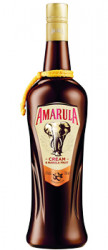An exotic fruit from Africa is steeped in folklore, and is also used to make Amarula, the luscious cream liqueur
On the plains of subequatorial Africa stands a beautiful tree. Its short trunk gives way to tall, slender branches and in February, at the height of the African summer, the female trees are laden with ripe, yellow fruit about the size of a plum. This is when the elephants arrive. For centuries they have walked miles, often travelling with their herd for days at a time to gorge themselves on these fruits, and so the tree is known as ‘The Elephant Tree’.
The tree’s real name is the Marula tree, and each one can produce up to two tonnes of fruit a year. There are tales about these trees dating back to the 13th century, mostly involving mythical drunken elephants, but the truth is far more interesting. Used locally to make wine and jam, marula fruit has been eaten for over 10,000 years and contains four times as much vitamin C as an orange. A relative of the mango, once you’ve broken through the thick skin you can expect a creamy, fleshy stone fruit with an exotic taste.
In the early 1980s someone had the genius idea of distilling marula wine and combining the spirit with cream for a decadent, tropical liqueur. Called Amarula, it took the world by storm, and is now one of the most popular cream liqueurs on the market.
Made at the Amarula Lapa, 13 kilometres from the Kruger National Park where many Marula trees grow, Amarula isn’t just one of South Africa’s most successful exports – it is central to the lives of the locals. During harvesting season, Amarula employs people from nearby villages to harvest the fruit, and out of season they sponsor a number of community based projects to help supplement the fruit-pickers’ income.
A great drink from a socially responsible company. What better reason is there to give it a try?



